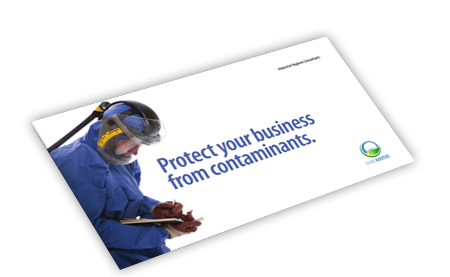Shelby County Explores Options for Improving Indoor Air Quality in Aging Schools

The EPA says the average American spends somewhere around 90 percent of their time indoors inhaling air strife with airborne pollutants. That’s an accumulative two to five times higher than pollutants we typically encounter outdoors.
The possibility of exposure increases in aged structures. The older the building, the less likely it has an environmentally safe design to maximize air quality.
Recently, the Shelby County School district announced just such concerns about the air quality in its buildings and planned to investigate ways to improve the conditions.
“We have to assume we’re already starting off at a bad air quality and now we’re introducing a virus that will make it worse,” says Knoxville-based David Weekley, an industrial hygienist. Though his experience is mostly in hospitals, Weekley has advised Tennessee school districts on their air systems.
Poor Air Quality in Our Schools
Addressing poor ventilation in our schools is important as bad air can have a devastating impact on a child’s developmental health and learning experiences.
Indoor air pollution promotes the risk of heart disease, respiratory infections, strokes, and lung cancer. It will have adverse effects on children with conditions like asthma. Inadequate ventilation increases the amassing of the release of gases and particles. The contaminants sit in the air and our lungs take them in and exhale them, and just recycle the threat.
Older schools were not necessarily built with environmentally sound practices. They do not bring in outdoor air (opening a window doesn’t solve the problem). With no way to recycle clean air, such as with a well-maintained HVAC system, pollutant levels aren’t diluted.
Impact of Bad Air Quality
Though not always obvious, rest assured, inhaling bad air is not good for anyone. Here are symptoms influenced by poor air.
- Coughing. Coughing is a prevalent sign of poor air quality.
- Breathing issues. Pollutants hover in the air and can be tinted with compounds like carbon dioxide. The risk of inhaling the fumes can lead to long-term illnesses at any time later in life.
- Allergic reactions. Pollutants can aggravate allergies.
- Sneezing. Air debris influences sneezing, watery eyes, and other symptoms. Hay fever season is often blamed for allergic reactions when there may be air contaminants.
- Skin dryness. Poor quality of indoor air can prompt redness, rashness, dry skin, and other conditions. Bacteria in the air are leeches, attaching to our children’s skin and blocking the flow of nutrients.
- Irritation. Poor air contributes to idiosyncrasies in our bodies. Runny noses and dry eyes can be victims of bad air quality, especially if you have a preexisting condition.
- Nausea. Unknowingly inhaling fumes and carbon monoxide can lead to nausea, dizziness, and disorientation.
- Headaches. Compromised health can start with unexplained headaches. If your child’s complaining about head pain while at school, it may be the air.
- Dust buildup. Dust accumulates on surfaces where the air is not sufficiently recycled. Wiping surfaces certainly helps but doesn’t negate the idea that the school’s air ecosystem is functional.
- Cold and hot spots. If there are hot and cold spots in the same room, there are air issues.
- Odors. Stagnant air can lead to unpleasant smells. Pollen, mold, dust, and other contaminants are all contributors.
Making It Safe to Breathe in School
Building administrators for sensitive institutions such as educational facilities must maintain awareness that older and aging buildings are at greater risk of airborne contaminants and the threat to occupants.
A simple assessment can give building administrators peace of mind. More importantly, if air quality requires attention, they can work with a professional team and put a strategy in place for remediation to their facilities. That’s critical to ensuring minimized exposure to our children and promoting a healthy future.
Our team of experts is ready to investigate, test, mitigate, and ensure proper abatement is used, providing much-needed peace of mind. Call us at 888.586.8488 or reach out here.
We’re on it.
While we can handle almost any emergency, a proactive disinfection protocol will help you maintain more control of your facility. Let’s discuss.
Helpful Resources.
Refer to these organizations and agencies for more information.
> www.epa.gov
> www.osha.gov
> www.aiha.org
> www.cdc.gov/niosh
> www.nrep.org
> www.acac.org
> www.ihmm.org

 Visit the EnviroMavens booth #46 at the
Visit the EnviroMavens booth #46 at the



